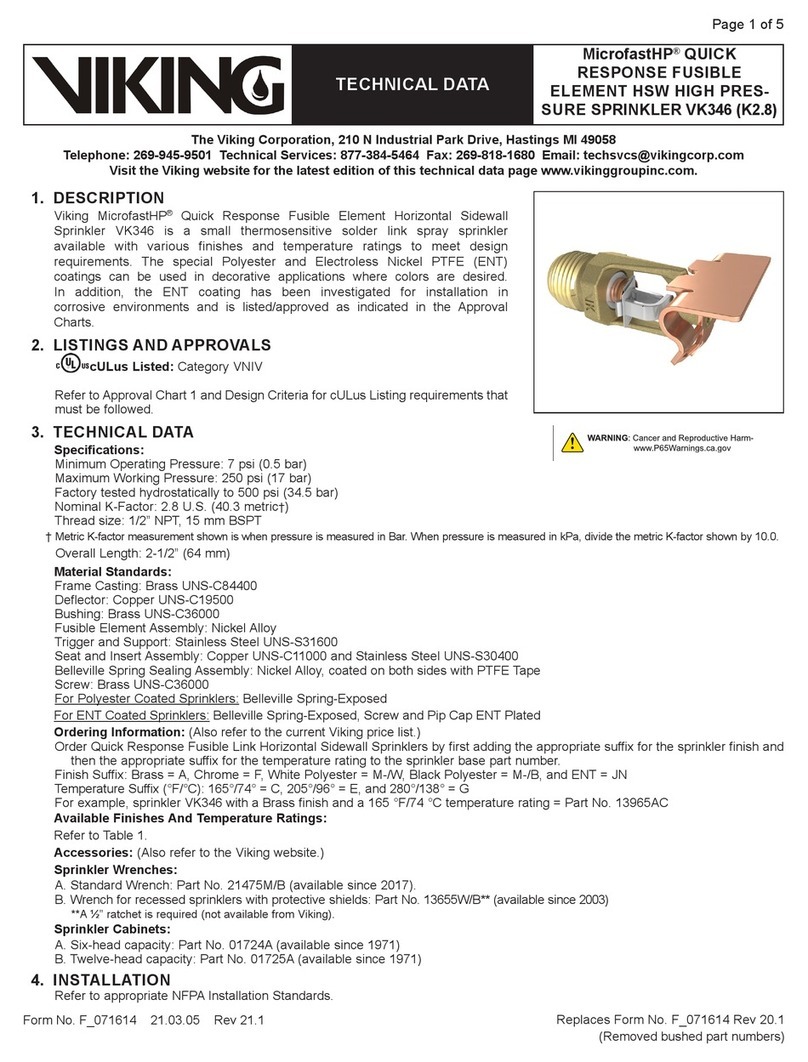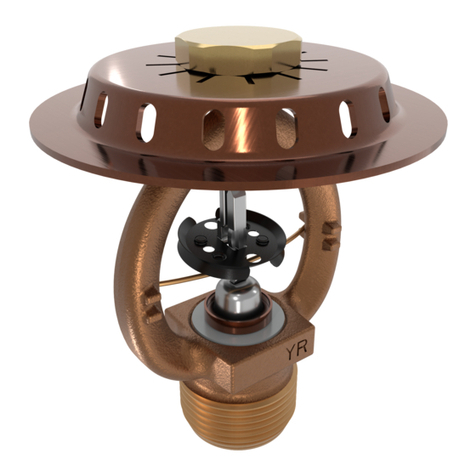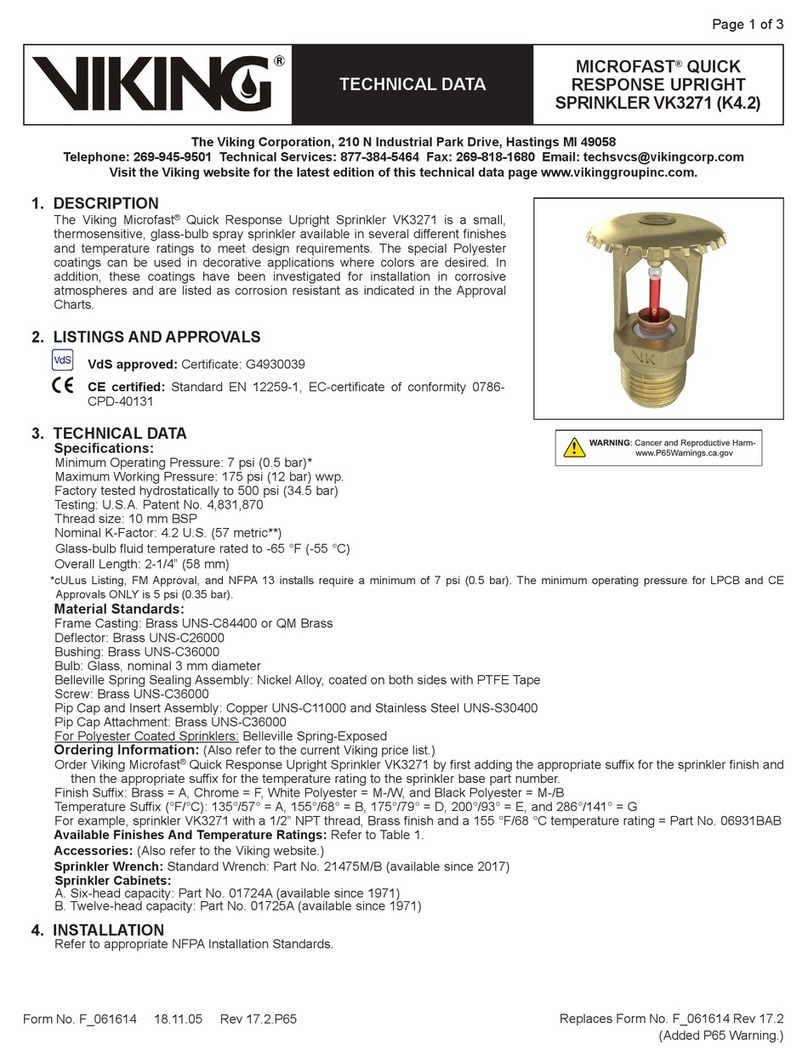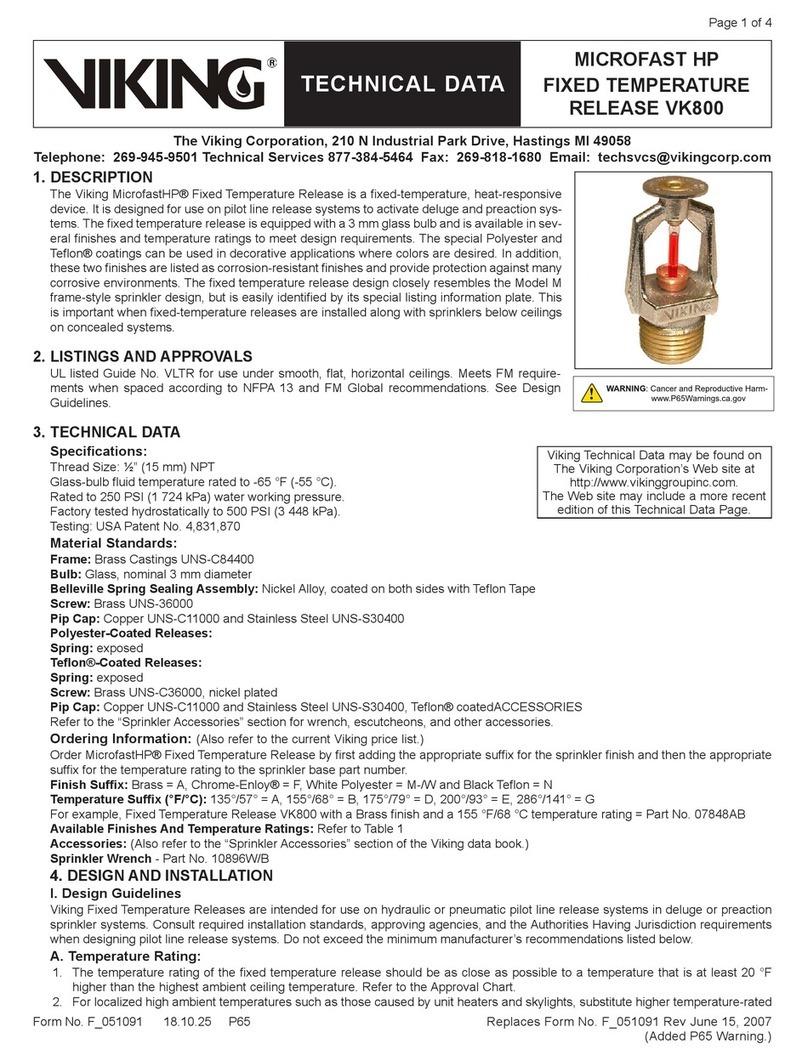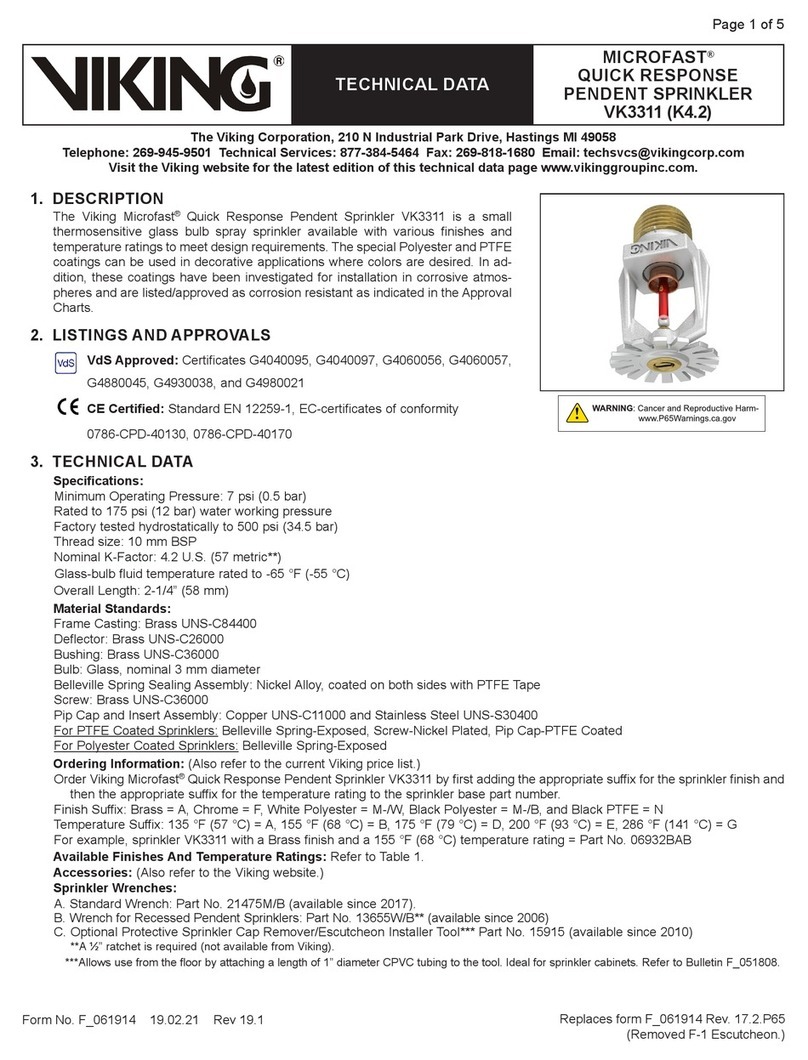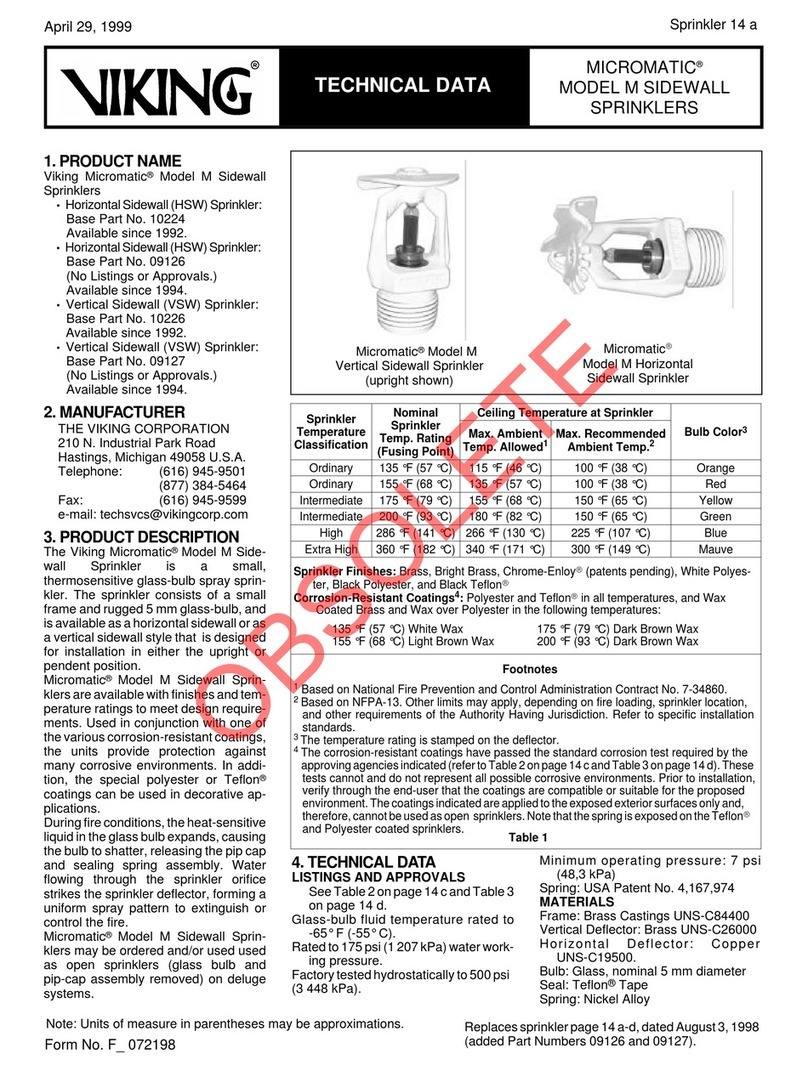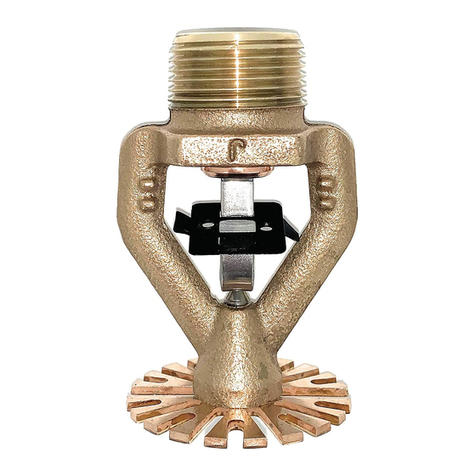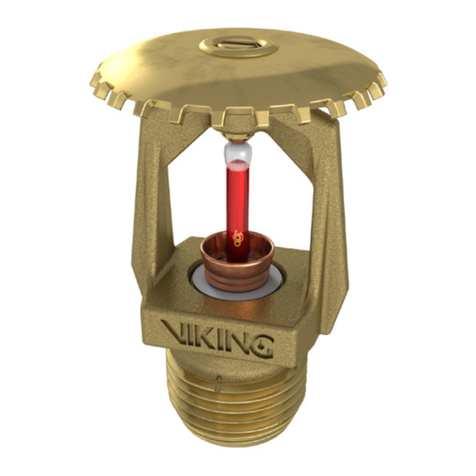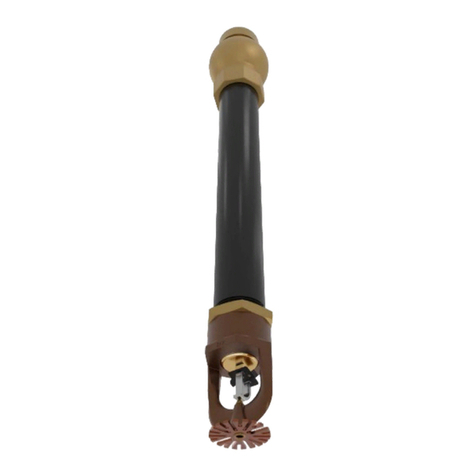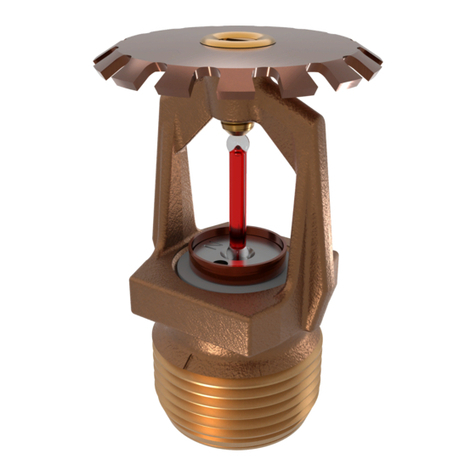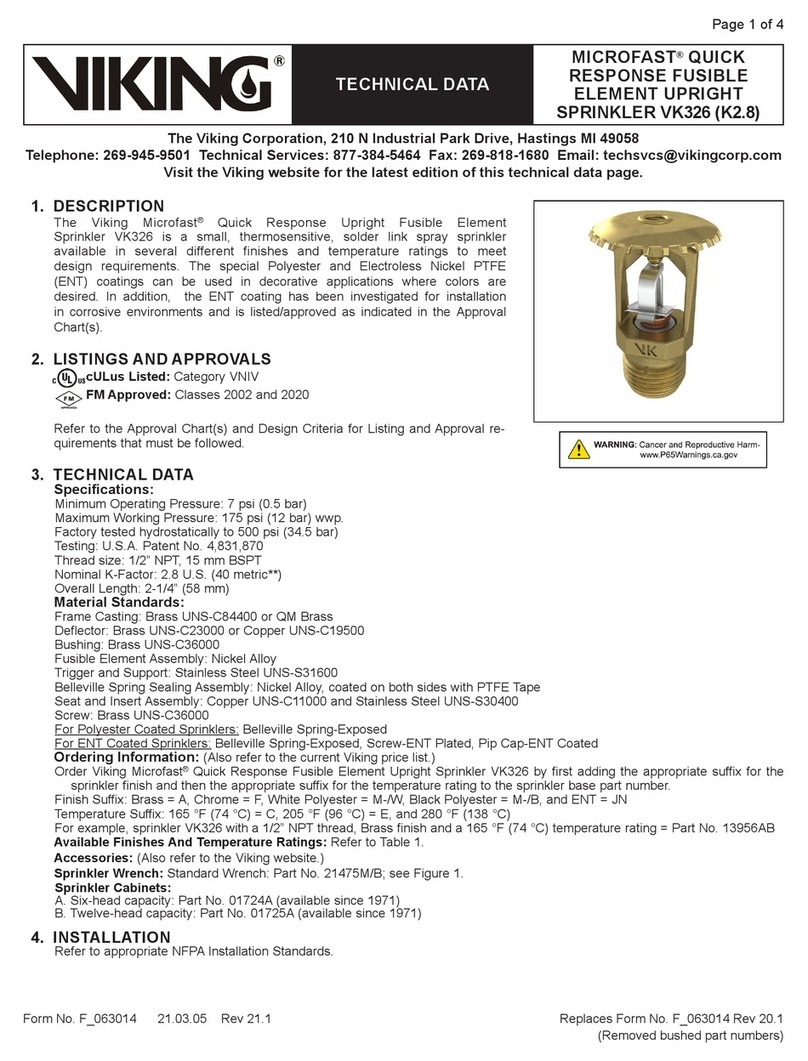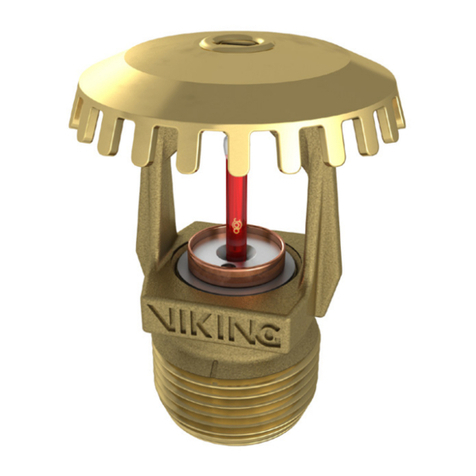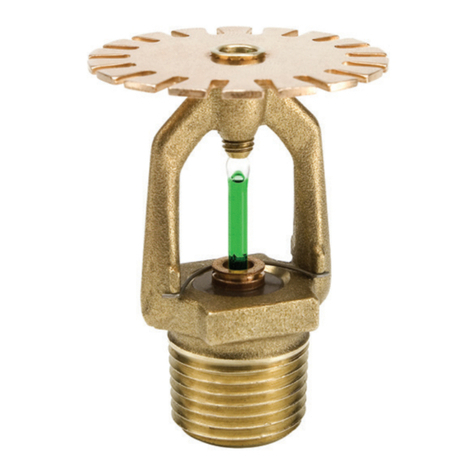
TECHNICAL DATA
August 24, 2006
ESFR PENDENT SPRINKLER
SIN VK510 (K25.2)
6. INSTALLATION
WARNING: Viking sprinklers are manufactured and tested to meet rigid requirements of the approving agency. The sprin-
klers are designed to be installed in accordance with recognized installation standards. System design must be based on
ESFR design guidelines described in the latest edition of Viking technical data, applicable FM Global Loss Prevention Data
Sheets, the latest NFPA Standards, the latest standards of Verband der Sachversicherer (VdS), and the Authorities Having
Jurisdiction, and also with the provisions of governmental codes, ordinances, and standards whenever applicable. Deviation
from the standards or any alteration to the sprinkler after it leaves the factory including, but not limited to: painting, plating,
coating, or modification, may render the sprinkler inoperative and will automatically nullify the approval and any guarantee
made by The Viking Corporation.
A. Sprinklers must be handled with care. They must be stored in a cool, dry place in their original shipping container. Never
install sprinklers that have been dropped or damaged in any way. Such sprinklers should be destroyed immediately.
NOTE: Wet pipe systems must be provided with adequate heat.
B. The sprinklers must be installed after the piping is in place to prevent mechanical damage. Before installing, be sure to
have the appropriate sprinkler model and style, with the correct orifice size, temperature rating, and response charac-
teristics.
C. With the sprinkler contained in the plastic protective cap, apply a small amount of pipe-joint compound or tape to the
male threads only, while taking care not to allow a build-up of compound in the sprinkler orifice.
D. Use ONLY sprinkler wrench 12143W/B or 13635W/B (shown in Figure 1) for installing ESFR Sprinkler VK510!
With the sprinkler contained in the protective cap, install the sprinkler onto the piping by applying the sprinkler
wrench to the sprinkler wrench flats only, while taking care not to damage the sprinkler operating parts.
DO NOT use any other type of wrench, as this could damage the unit.
DO NOT use the sprinkler deflector or fusible element to start or thread the sprinkler into a fitting.
DO NOT exceed 50 ft. lbs. of torque (hand tight, plus approximately two full turns with the wrench) to install
these sprinklers. Higher levels of torque may distort the sprinkler inlet with consequent leakage or impairment
of the sprinkler.
E. After installation, the entire sprinkler system must be tested. The test must be conducted to comply with the Installation
Standards. Make sure the sprinkler has been properly tightened. If a thread leak occurs, normally the unit must be re-
moved, new pipe-joint compound or tape applied, and then reinstalled. This is due to the fact that when the joint seal is
damaged, the sealing compound or tape is washed out of the joint. Immediately replace any damaged units, using the
special sprinkler wrench only.
F. After installation and testing and repairing of all leaks, remove the protective caps from the sprinklers. Do NOT
use any type of tool to remove the cap. Remove the cap by hand: turn it slightly and pull it off the sprinkler.
When removing caps, use care to prevent dislodging or damaging sprinkler ejector spring and fusible element.
THE CAPS MUST BE REMOVED FROM SPRINKLERS BEFORE PLACING THE SYSTEM IN SERVICE!
7. MAINTENANCE
NOTICE: The owner is responsible for maintaining the fire protection system and devices in proper operating condition. For
minimum maintenance and inspection requirements, refer to the NFPA standard that describes care and maintenance of
sprinkler systems. In addition, the Authorities Having Jurisdiction may have additional maintenance, testing, and inspection
requirements that must be followed.
A. The sprinklers must be inspected on a regular basis for corrosion, mechanical damage, obstructions, paint, etc. The
frequency of inspections may vary due to corrosive atmosphere, water supplies, and activity around the device.
B. Sprinklers that have been painted or mechanically damaged must be replaced immediately. Sprinklers showing signs of
corrosion shall be tested and/or replaced immediately as required. Installation standards require sprinklers to be tested
and, if necessary, replaced after a specified term of service. For Viking ESFR Pendent Sprinklers, refer to the Installation
Standards (e.g., NFPA 25) and the Authorities Having Jurisdiction for the specified period of time after which testing
and/or replacement is required. Sprinklers that have operated cannot be reassembled or reused, but must be replaced.
When replacing sprinklers, use only new sprinklers.
•
•
•
Sprinkler 124 f

